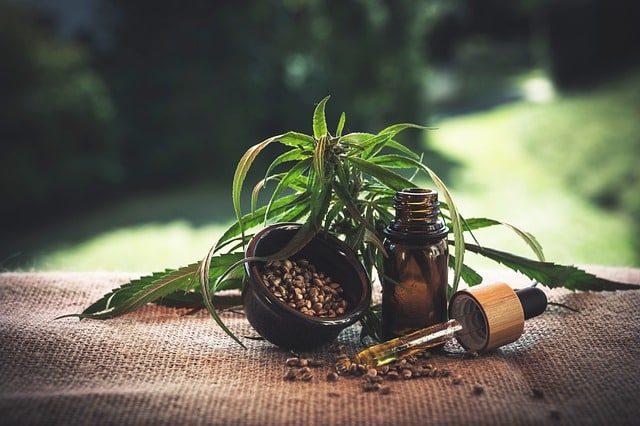Hello, budding cannabis cultivators! Want to learn more about how the Cookies and Cream strain and your other favorite marijuana strains are grown? In the process of learning about this fascinating process, you may have come across the term “topping”. It’s a simple, yet effective method that involves trimming the top of your plant to encourage the growth of multiple main colas, ultimately leading to better yields and more robust plants.
In this article, we’ll take you through the ins and outs of topping, including its benefits, the ideal time to top your plants, and a step-by-step guide on how to do it. We’ll also discuss some common mistakes to avoid and share additional tips to help you achieve success in your cannabis garden. So, without further ado, let’s dive into the wonderful world of topping cannabis plants!
Benefits of Topping Cannabis Plants
Topping your cannabis plants has numerous advantages that can significantly improve the quality and quantity of your harvest. Let’s delve into five key benefits that make topping an essential practice for both novice and experienced growers:
- Improved light penetration: Topping encourages the growth of multiple main colas, creating a more even canopy that allows light to reach all parts of the plant. This efficient light distribution results in healthier plants with higher yields.
- Increased number of main colas: By removing the apical meristem (the plant’s main growth tip), topping stimulates the growth of two or more main colas. More colas mean more flower sites, leading to a larger overall harvest.
- Enhanced overall plant growth and yield: Topping helps distribute plant energy more effectively, promoting the development of stronger, bushier plants with more side branches. This translates to an increased yield at harvest time.
- Better resource allocation and utilization: Topping prevents your cannabis plant from focusing all its energy on one main cola. Instead, it encourages the plant to direct resources to multiple growth sites, maximizing the plant’s potential and producing more buds.
- Greater control over plant height and shape: If you’re growing cannabis in a limited space, topping can help control the height and shape of your plants. This technique allows you to cultivate bushier plants that are better suited for confined spaces, such as grow tents or small gardens.
Understanding Plant Anatomy for Topping
Before you start topping your cannabis plants, it’s essential to understand some basic plant anatomy to ensure you’re doing it right. Here are three key concepts that will help you grasp the fundamentals of topping:
- Apical dominance: Cannabis plants exhibit a growth pattern called apical dominance, where the main stem (apical meristem) grows more vigorously than the side branches. This is because the apical meristem produces a hormone called auxin, which suppresses the growth of lower branches. Topping removes the apical meristem, disrupting the auxin production and allowing the side branches to grow more freely.
- Nodes, internodes, and meristems: Nodes are the points on a plant stem where leaves and branches emerge. The space between nodes is called an internode. Meristems are the plant’s growth points, responsible for producing new leaves, stems, and flowers. Topping focuses on the apical meristem, but other meristems along the plant can also develop into main colas when topping is applied.
- Main colas vs. side branches: The main cola is the central stem and primary flower site, which usually produces the largest buds. Side branches grow from the nodes and can develop secondary colas. Topping encourages the growth of multiple main colas, increasing the number of primary flower sites and boosting your overall yield.
When to Top Cannabis Plants
Knowing the right time to top your cannabis plants is crucial for a successful outcome. Here are a few guidelines to help you determine the ideal moment to start topping:
- Growth stage: The best time to top your cannabis plants is during their vegetative stage, when they’re actively growing and producing new leaves and stems. Avoid topping during the flowering stage, as it can stress the plant and impact bud production.
- Minimum nodes: Wait until your plant has developed at least 4-6 nodes before topping. This ensures the plant is mature enough to handle the stress of topping and recover quickly.
- Considerations: Factors like plant strain, growth conditions, and desired outcome can also influence the right time to top. Some strains may need more time to recover, while others may be more resilient. Observe your plants and adjust your topping timeline accordingly.
How to Top Cannabis Plants: A Step-by-Step Guide
Ready to top your cannabis plants? Follow this simple step-by-step guide to ensure you’re doing it correctly and safely:
- Materials needed: All you need is a clean, sharp pair of pruning shears, scissors, or a razor blade. Make sure your cutting tool is sterilized to prevent infections.
- Selecting the right node for topping: Examine your plant and identify the node you want to top. Typically, you should cut above the 4th, 5th, or 6th node, depending on the plant’s size and your desired outcome.
- Cutting technique and angle: With your sterilized cutting tool, make a clean cut at a 45-degree angle, about 1/4 inch (0.6 cm) above the node. This angled cut helps prevent water from pooling on the cut site and minimizes the risk of infection.
- Proper sanitation and cleanliness: After topping, clean your cutting tool with rubbing alcohol or another sterilizing agent. Good hygiene practices minimize the risk of transferring pathogens to your plants.
- Monitoring plant recovery and growth after topping: Keep an eye on your plant’s progress after topping. You should see new growth emerging from the topped node within a few days to a week. Ensure the plant receives adequate light, water, and nutrients to support its recovery and growth.














Leave a Reply